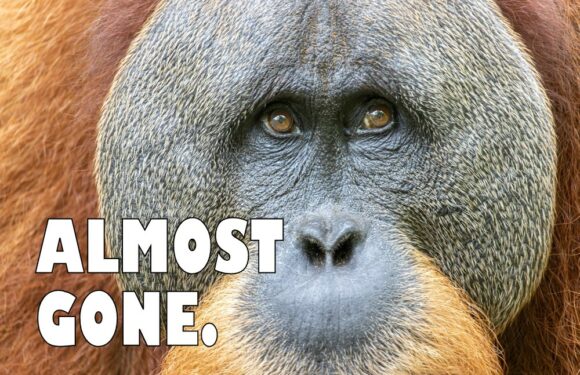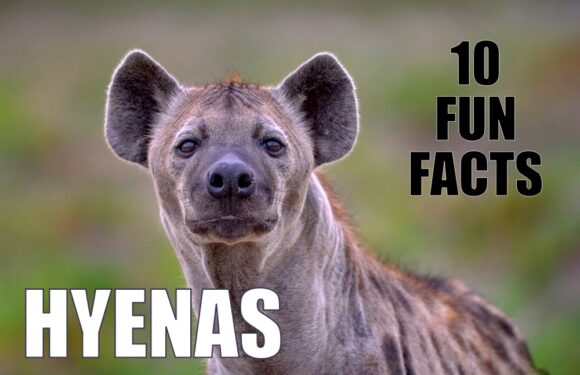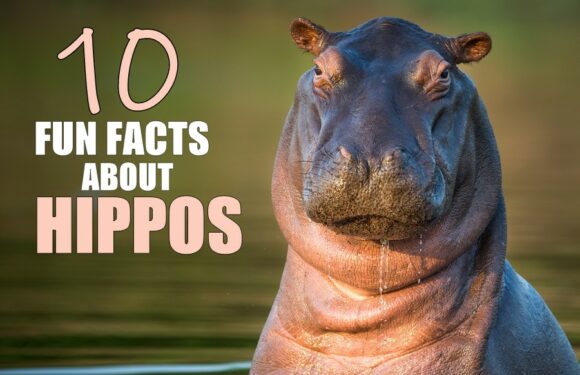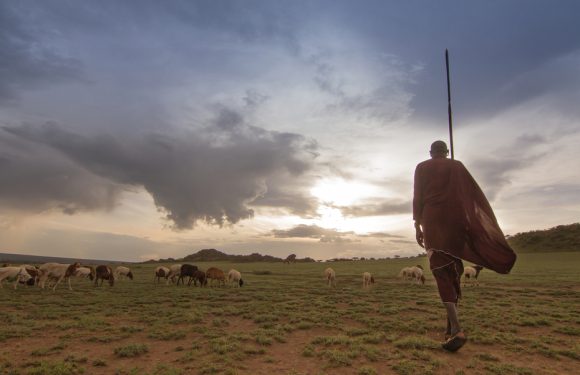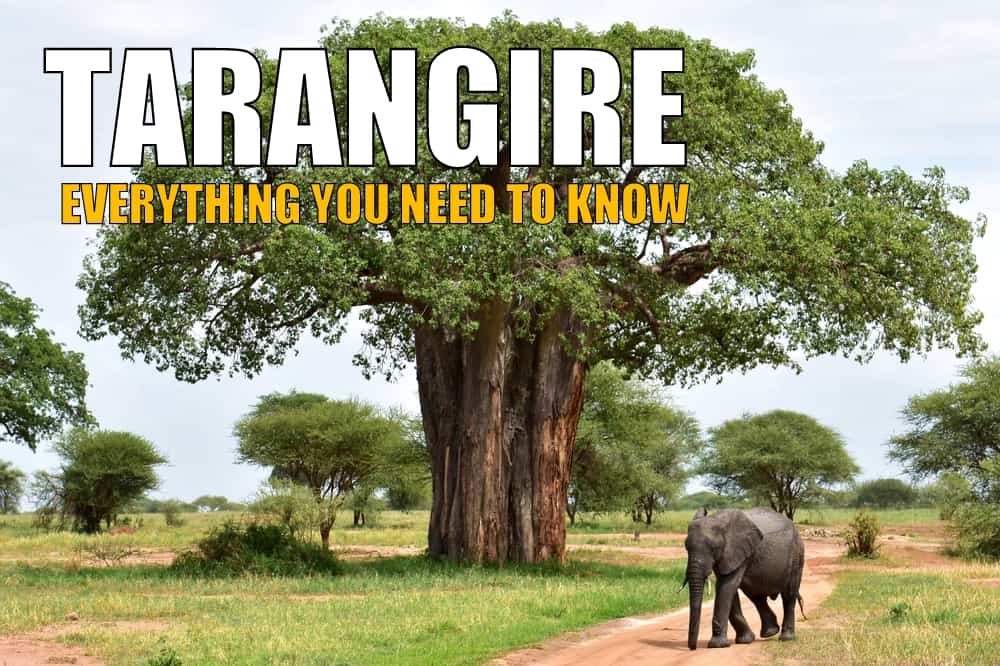
In the shadow of its more famous siblings, the Serengeti and the Ngorongoro Crater, Tarangire National Park in Tanzania is a hidden gem. This park is a sanctuary of untamed wilderness. It offers our clients a safari experience steeped in serenity and abundant wildlife.
How Do You Pronounce Tarangire?
Tarangire is pronounced ‘Tair-an-GEER-ee.’
Where is Tarangire Located?
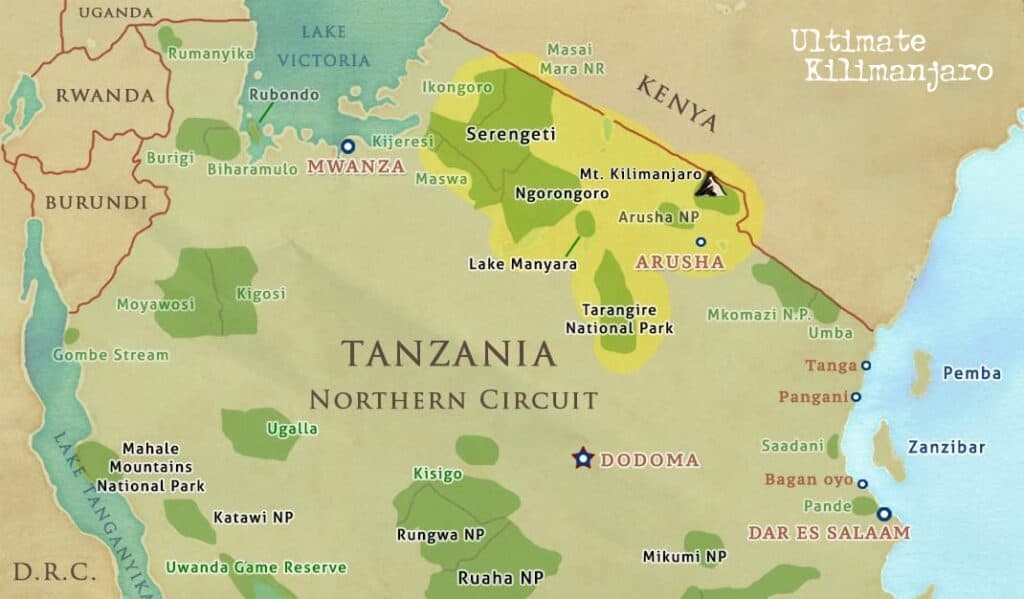
Tarangire is located in northern Tanzania. It is part of the country’s northern safari circuit which also includes Lake Manyara, Ngorongoro, and the Serengeti.
Tarangire is approximately 70 miles (110 km) from Lake Manyara National Park, 90 miles (140 km) from Ngorongoro Conservation Area, and 120 miles (200 km) from Serengeti National Park. It is located about 130 miles (210 km) from Kilimanjaro International Airport,
When was Tarangire National Park Created?
Tarangire National Park was established in 1970 to preserve its unique ecosystem and biodiversity.
What Does Tarangire Mean?
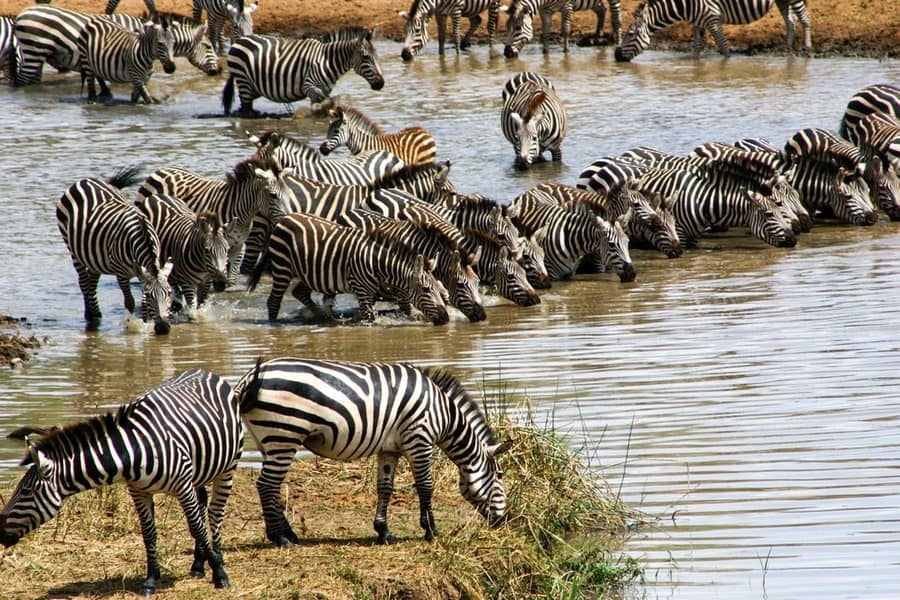
The park’s name is derived from the Tarangire River that flows through the park. This river is the primary source of water for the wildlife in the region. It is a vital lifeline for the ecosystem during the dry season.
The word Tarangire has a few possible origins. It might stem from the Maasai word ‘tara ngare,’ meaning “spotted water,” in reference to the river that never dries. It could also be derived from a Wambugwe word meaning “meandering.” Finally, Tarangire could mean “river of warthogs,” from the combination of two words – ‘tara’ (“river” in the Mbugwe language) and ‘ngire’ (“warthog” in the Hadzabe language).
How Big is Tarangire National Park?
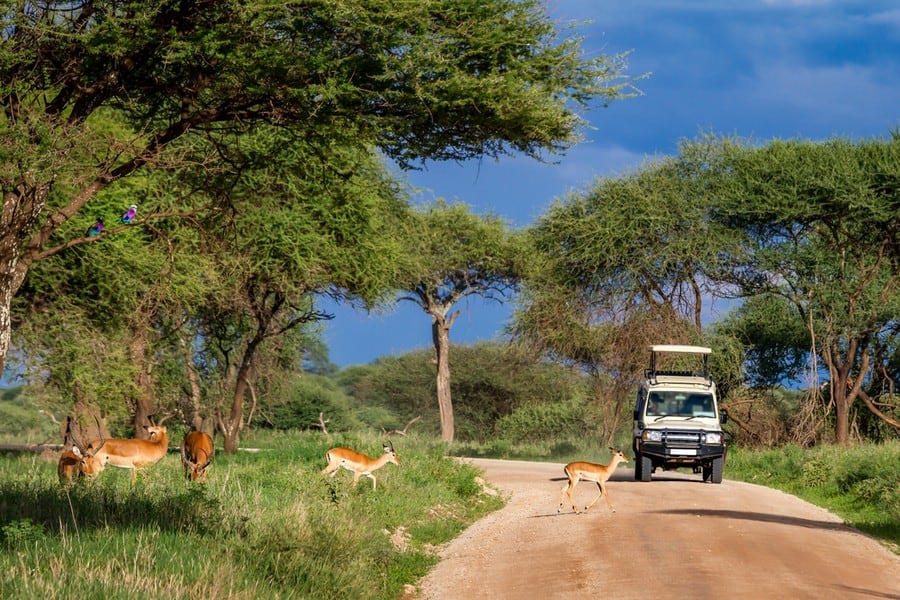
Tarangire National Park spans an area of approximately 1,100 square miles (2,850 square kilometers). It is Tanzania’s fifth-largest national park, nicknamed the “little Serengeti.”
To put its size into perspective, it’s about half the size of Delaware in the USA or slightly larger than London in the United Kingdom.
Why is Tarangire National Park Famous?
Tarangire National Park is famous for several unique features that distinguish it from other parks in the region:
Large Elephant Population: Tarangire is renowned for hosting one of the largest elephant populations in Tanzania. During the dry season, herds of up to 300 elephants can be seen congregating around the Tarangire River and other water sources, offering exceptional opportunities for elephant watching.
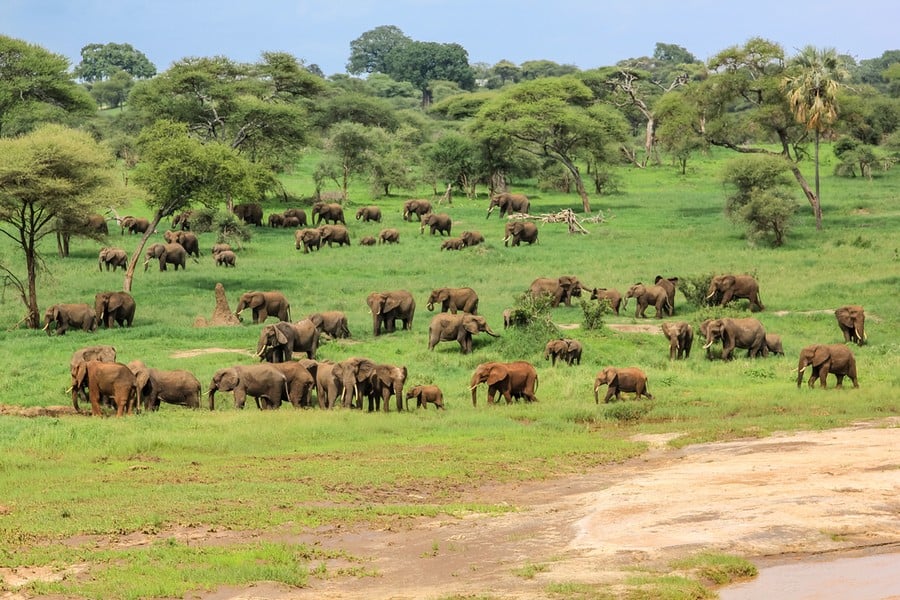
Baobab Trees: The park is dotted with ancient baobab trees. These trees, often referred to as the “upside-down trees” because of their root-like branches, are iconic symbols of the African landscape.
Tarangire River: The Tarangire River is the primary source of fresh water for wildlife in the region. The river attracts a high concentration of animals, which in turn draw predators.
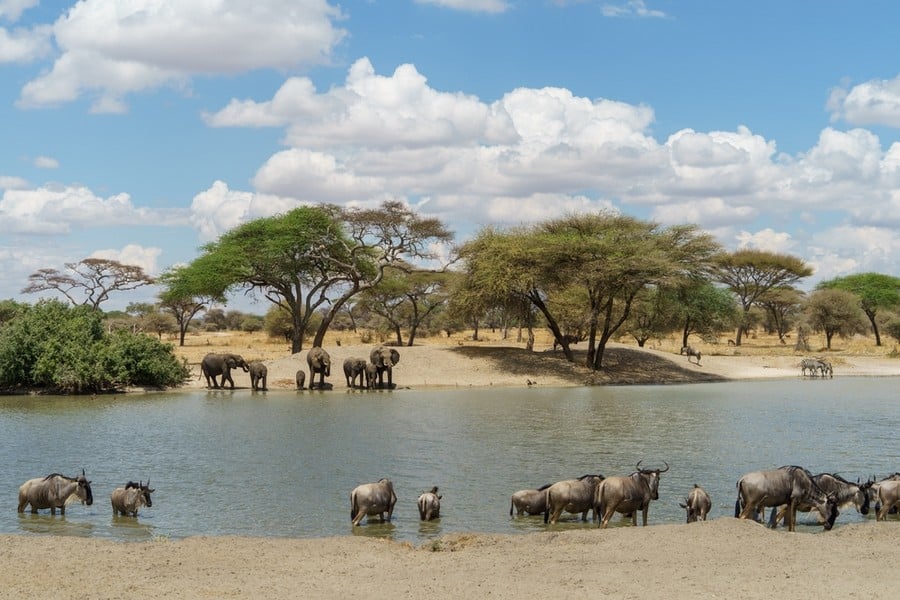
Seasonal Wetland: During the wet season, parts of the park transform into a lush, green landscape, attracting migratory animals and supporting a variety of breeding activities, especially for birds.
Less Crowded: Compared to its more famous neighbors like the Serengeti and Ngorongoro Crater, Tarangire National Park tends to be less crowded, offering a more serene and exclusive wildlife viewing experience.
How was Tarangire Formed?
The formation of Tarangire National Park, like much of Tanzania’s landscape, is a story that intertwines geology, climate, and biology over millions of years.
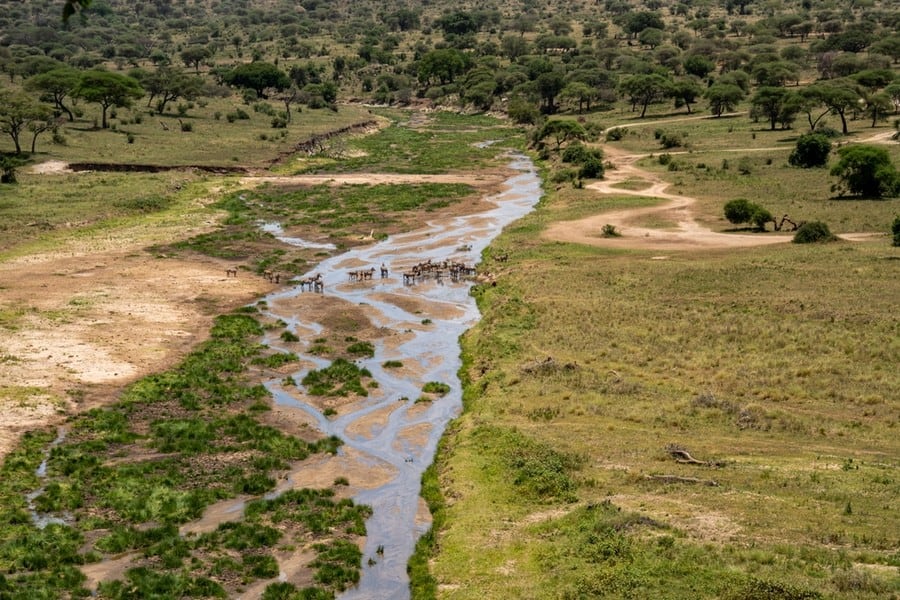
The East African Rift is a tectonic plate boundary that is slowly splitting the African Plate into two. This movement has played a pivotal role in shaping the region. The rifting process has led to the creation of many of Tanzania’s geographical features, including its valleys and escarpments.
While the park itself is not characterized by volcanic landscapes like some of its northern neighbors (e.g., Ngorongoro Crater), past volcanic activity has influenced its soil composition and topography. The volcanic ash and debris, carried by the winds over time, have contributed to the fertile soils found in parts of the park, supporting its lush vegetation.
The Tarangire River has carved its way through the landscape, creating varied habitats along its banks. The climate has further impacted the vegetation patterns and animal behavior in the park. The distinct wet and dry seasons have led to the development of diverse ecosystems ranging from grassy savannahs to swampy areas and dense woodlands.
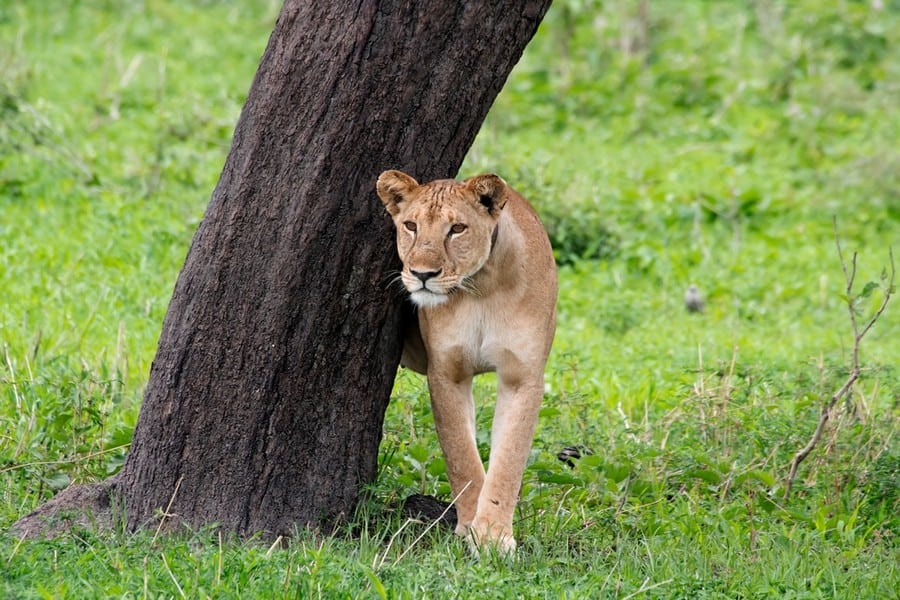
Over time, the flora and fauna in the Tarangire area have evolved to adapt to these environmental conditions. The park’s famous baobab trees, for example, are well adapted to the dry climate, able to store large quantities of water in their trunks. Similarly, the wildlife, particularly the large elephant population, has adapted to the seasonal availability of water and food.
What Animals Live in Tarangire National Park?
Tarangire National Park has a variety of habitats, including grassy savannahs, swamps, and woodlands. These provide an ideal environment for many species, making the park a microcosm of East African wildlife diversity.
Some of the animals that live in the Tarangire inlcude:
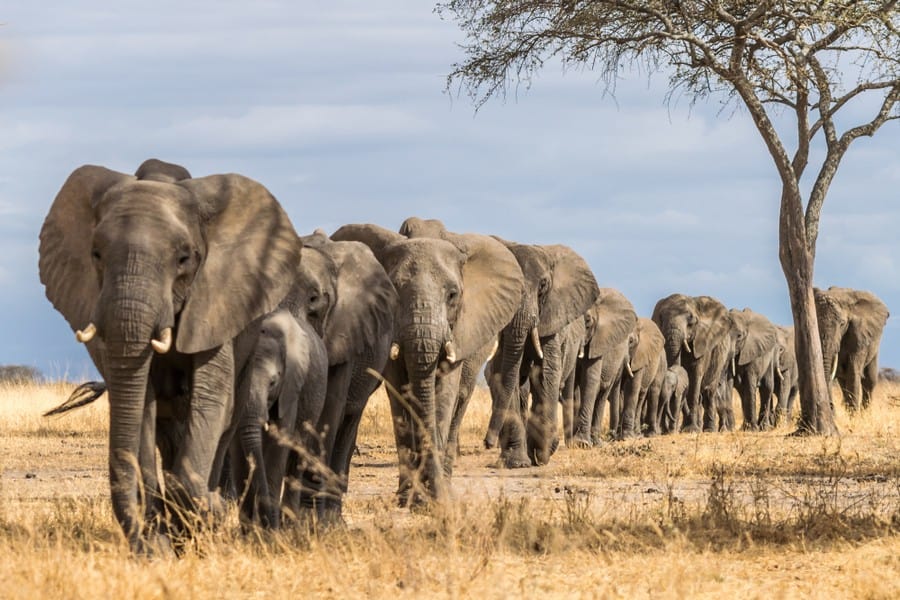
- Elephants: Tarangire is famous for its large herds of elephants. These gentle giants are often seen wandering through the park, especially near the Tarangire River.
- Buffalo: These sturdy animals are a common sight, often found grazing in the grasslands or cooling off in the park’s swamps.
- Lions: As top predators, lions are present in Tarangire, though they can sometimes be elusive due to the park’s dense vegetation.
- Leopards: These solitary and nocturnal cats are more challenging to spot but are residents of the park, often seen lounging in trees.
- Cheetahs: While not as numerous as in some other parks, cheetahs can be spotted in Tarangire, particularly in the open areas where they hunt.
- Zebras: Herds of zebras are a common sight, their distinctive stripes making them an iconic symbol of African wildlife.
- Wildebeest: These animals are also prevalent in the park, often seen grazing alongside zebras.
- Giraffes: Tarangire’s landscape is dotted with these elegant creatures, browsing on the tops of trees.
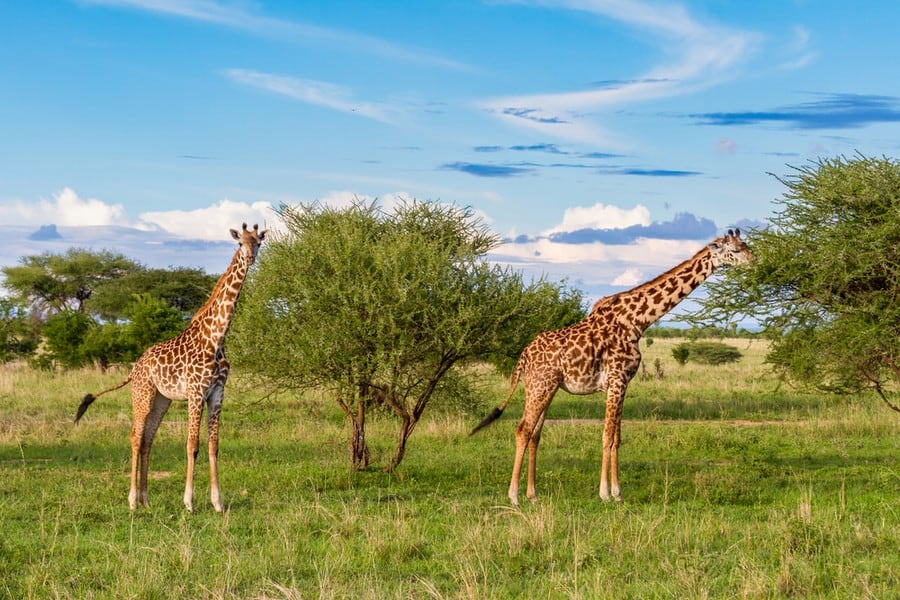
- Impalas: These graceful antelopes are widespread throughout the park.
- Waterbucks: Often found near water sources, waterbucks are a larger species of antelope.
- Dik-diks: These small, shy antelopes are also residents of Tarangire.
- Warthogs: These distinctive animals, with their protruding tusks, are commonly seen in the park.
- Baboons and Vervet Monkeys: These primates are often spotted in Tarangire, particularly in wooded areas and near water sources.
- Mongoose: Several species of mongoose can be found, often seen foraging in small groups.
- Hyenas: Spotted hyenas are present, playing their role as scavengers and hunters.
- Birdlife: Tarangire is a paradise for birdwatchers, with over 500 species recorded. This includes raptors, waterbirds, and colorful passerines.
- Python: The African python, one of the largest snake species, can occasionally be seen, particularly in the park’s trees.
- Lesser Kudu: This elusive and beautifully striped antelope is a special sighting in Tarangire.
- Oryx: The striking East African oryx makes occasional appearances in the park.
- Hartebeest: These large antelopes are also part of Tarangire’s diverse wildlife.
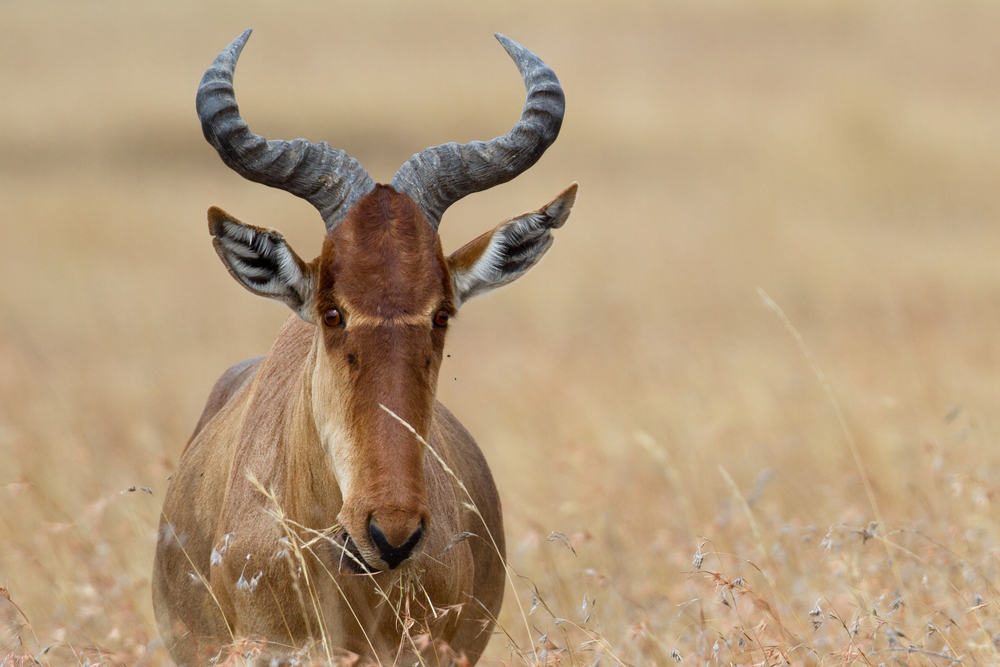
What is the Weather in Tarangire National Park?
Tarangire National Park experiences a climate that is generally semi-arid, characterized by distinct wet and dry seasons.
Dry Season (June to October)
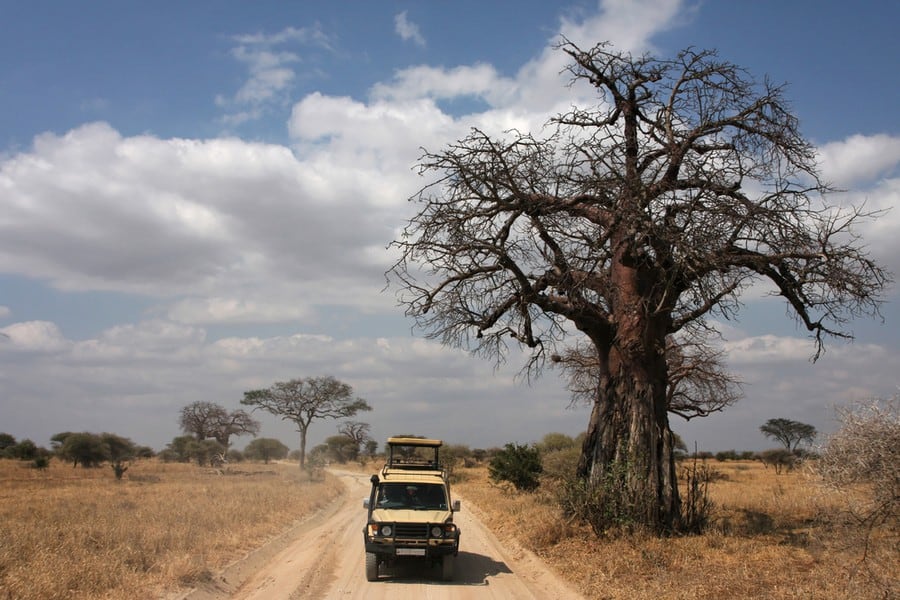
- Climate: This period is marked by dry weather with little to no rainfall. The days are typically sunny and warm.
- Temperatures: Daytime temperatures are comfortably warm, ranging from 75°F to 85°F (24°C to 29°C). However, during the peak of the day, temperatures can rise, occasionally reaching up to around 90°F (32°C). Nighttime temperatures can be cooler, particularly in the early and late dry season, ranging from 55°F to 60°F (13°C to 16°C), with June and July often being the coolest months.
- Wildlife: The dry season sees the park’s vegetation thinning out, and water sources become scarce. This scarcity draws animals to the Tarangire River and other remaining waterholes, making it an excellent time for wildlife viewing. Elephants, in particular, are more visible as they congregate around these water sources.
Wet Season (November to May)
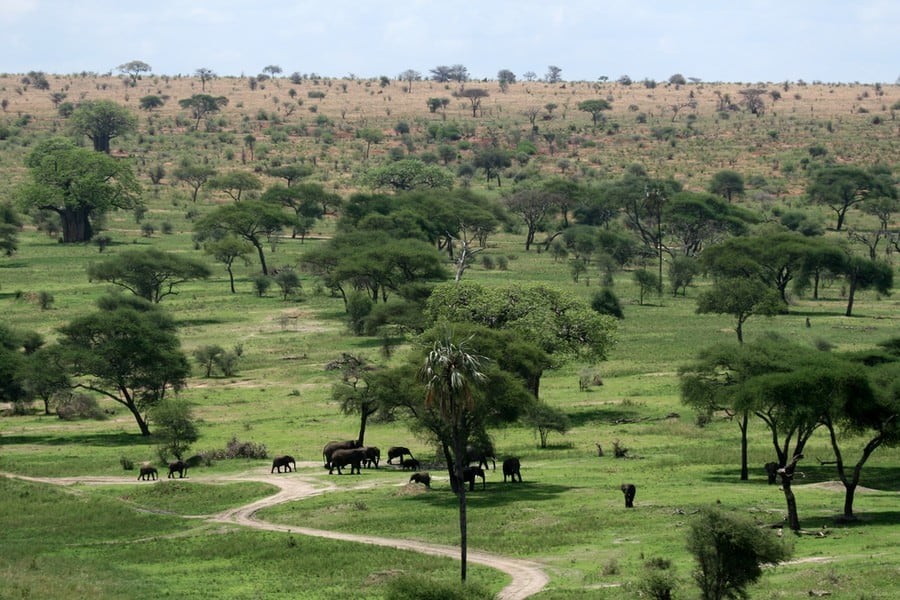
- Climate: The wet season is characterized by two phases – the ‘short rains’ from November to December and the ‘long rains’ from March to May.
- Temperatures: Daytime temperatures during the wet season are milder, typically ranging from 70°F to 80°F (21°C to 27°C). The cloud cover and rain help moderate the temperatures. Nighttime temperatures are a bit warmer than in the dry season, generally between 60°F and 65°F (16°C to 18°C), due to increased cloud cover.
- Wildlife: The park transforms into a lush, green landscape. This period is great for bird watching as migratory birds arrive, and the park’s resident bird species are in breeding plumage. While wildlife viewing is still possible, animals may be harder to spot due to the thicker vegetation.
When is the Best Time to Visit Tarangire National Park?
The best time to go may depend on what you wish to see and experience. Generally speaking, the optimal time to visit Tarangire is during the dry season when wildlife viewing is at its peak. However, the park is a year-round destination, with each season offering a unique experience.
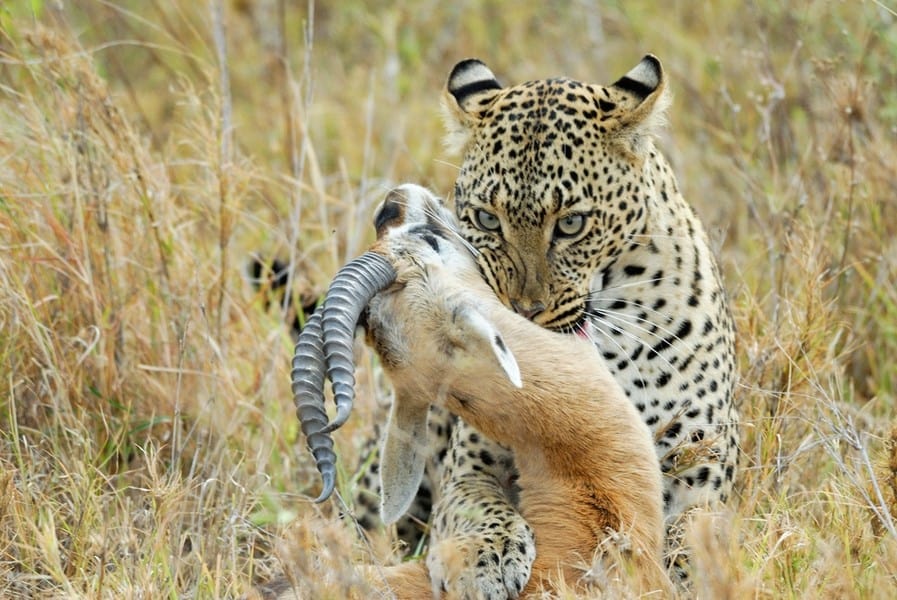
Wildlife Viewing
- The best time for wildlife viewing in Tarangire is during the dry season, particularly from July to October. The reduced foliage and concentration of animals around water sources make it easier to spot wildlife, including large herds of elephants and a variety of other game.
Bird Watching
- If you’re interested in bird watching or want to see the park in its most verdant state, the wet season is the best time. This includes the months of November and December and from February to April. The park is less crowded at this time.
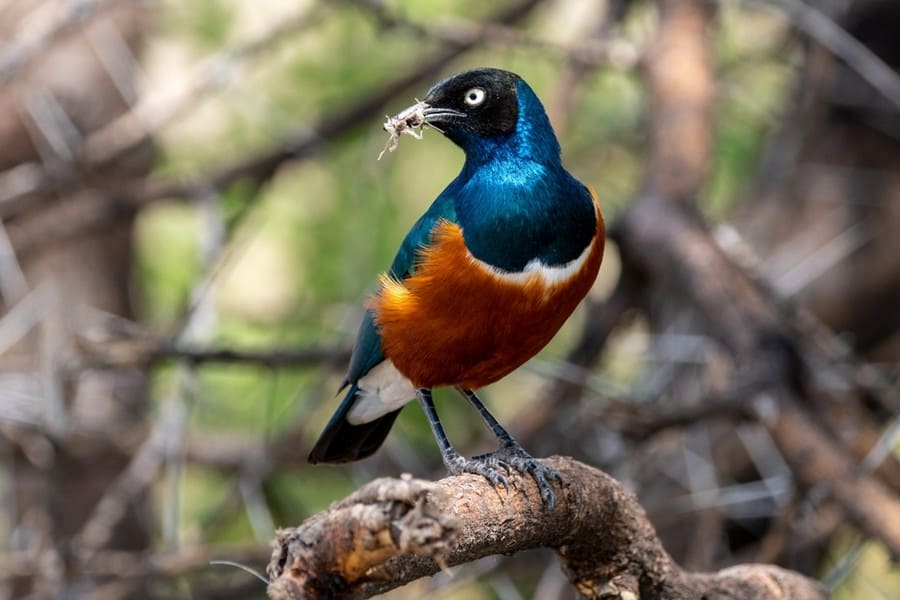
Shoulder Seasons
- June and November can be considered shoulder months, offering a balance between good wildlife viewing opportunities and fewer tourists.
Want to Visit Tarangire?
Join us on an Ultimate Kilimanjaro safari and experience the wildlife of Tarangire and Tanzania’s other famous destinations.











































